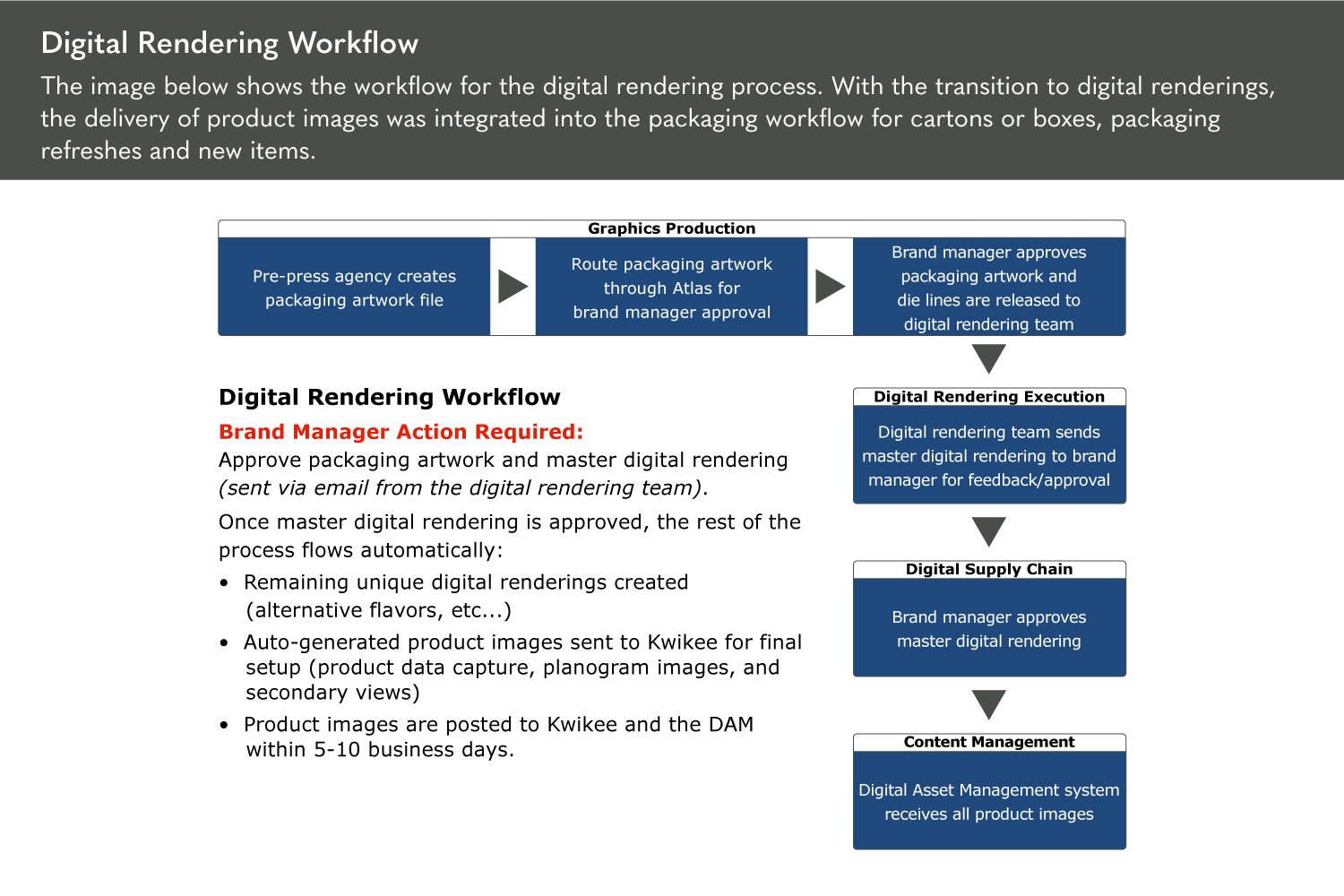eCommerce
Creative Workflow
The Kraft Heinz Company
Manage the Creation, Maintenance, and Distribution of eCommerce Assets
Project Overview
THE OPPORTUNITY
The Kraft Heinz eCommerce team needed product images and creative to support the sale of their online product portfolio on various eCommerce websites. In order to list a product on an eCommerce website, product images are required. The option to provide supplemental creative known as “enhanced content“ is also available. The addition of enhanced content enriches product information through copy and imagery, telling more of the brand story and product details.
THE HURDLE
There were either no images available for some of the products in the Kraft Heinz portfolio or the images available did not reflect the current packaging artwork.
THE SOLUTION
An audit of the Kraft Heinz portfolio was completed to understand the status of the product images. If any images were missing or outdated, action was taken to ensure that the items were either photographed or digitally rendered. Once the images were available, they were repurposed to create eCommerce creative and distributed to eCommerce websites to aid in their sale.
DETAILS
Project Length: Ongoing
Team: 1 person (to manage workflow); 4 people (to execute creative)
Role: Creative Operations Manager
My Contributions:
PROJECT MANAGEMENT
VENDOR RELATIONSHIP MANAGEMENT
CLIENT RELATIONSHIP MANAGEMENT
DIGITAL ASSET MANAGEMENT
eCOMMERCE PLATFORM MANAGEMENT
COLLABORATION
GRAPHIC DESIGN
PRODUCTION DESIGN
Discover & Learn
RESEARCH PERFORMED
In order to understand the image status of the Kraft Heinz product image portfolio, an audit needed to be performed. These were the steps taken (example below for the Athenos brand):
Product Information Management (PIM) Export: All of the product information from the PIM system was exported to a spreadsheet.
Product Data Refinement: The spreadsheet data was refined to only show the information that was relevant to the product image analysis.
Packaging Fields Added: There were fields that needed to be added to the spreadsheet to track what the current packaging artwork was (this type of information is not captured in the PIM system).
Criteria and Target Levels Established: Based on the availability of product images, criteria was defined and associated to various target levels.
Action Assigned: Each product had an assigned action to take for the brand teams.
PRODUCT IMAGE ANALYSIS
Strategize & Plan
After the audit was completed, action was taken to address the missing and outdated product images (the example below continues with the Athenos brand).
Brand Manager Communication: I worked with the brand teams to communicate the status of their portfolios and guide them to ship products to the studio to be photographed.
Digital Rendering Workflow: In the midst of the audit, Kraft Heinz was transitioning from product photography to digital renderings. This was a more cost-effective and efficient solution to receiving accurate images in a timely manner.
Prioritized Items: Any items that were cartons or boxes, going through a packaging refresh, or were new items were prioritized in the rendering process. These items were not asked to be shipped to the photography studio to receive images since they were being routed through a new workflow.
New Workflow: As Kraft Heinz was moving away from photography, I educated the brand teams on the new digital rendering process. I also managed the communication between the digital rendering team and brand teams to ensure renderings were executed in a quality and timely manner.
Content Management & Syndication
After the digital renderings were approved, the content management and syndication workflow kicked-off (snapshot below).
Product Image Vendor: After the master digital rendering was approved, the full set of product image views would be posted to the product image vendor website within 5-10 days.
Digital Asset Management (DAM): The product images from the product image vendor website flowed into the Kraft Heinz DAM system within 24 hours.
Product Experience Management system: The product images from the DAM flowed into the product experience management system within 24 hours. The product experience management system then pushed the images to various eCommerce websites.
Enhanced Content and Content Management platform: Product images and other brand approved marketing creative were downloaded from the DAM and repurposed to create eCommerce creative. Creative includes hero, mobile and appetizing hero images, Amazon A+ detail and enhanced content pages, Amazon brand stores and web banners. After the new creative was finalized, it was uploaded to the DAM. Depending on the asset type, the new creative was either pushed out to the product experience management system or it was separately uploaded to the content management platform so it could be pushed to various eCommerce websites.
BUSINESS IMPACT
The action taken to ensure product images were available, accurate, and repurposed to create eCommerce enhanced content resulted in the following:
The use of renderings helped to optimize and streamline the product image workflow increasing image accuracy from 43% to 90%
45 Amazon A+ detail and enhanced content pages were created and published in Q4 of 2018 aiding in discovery and conversion and helping to meet the eCommerce team's content MBO


















